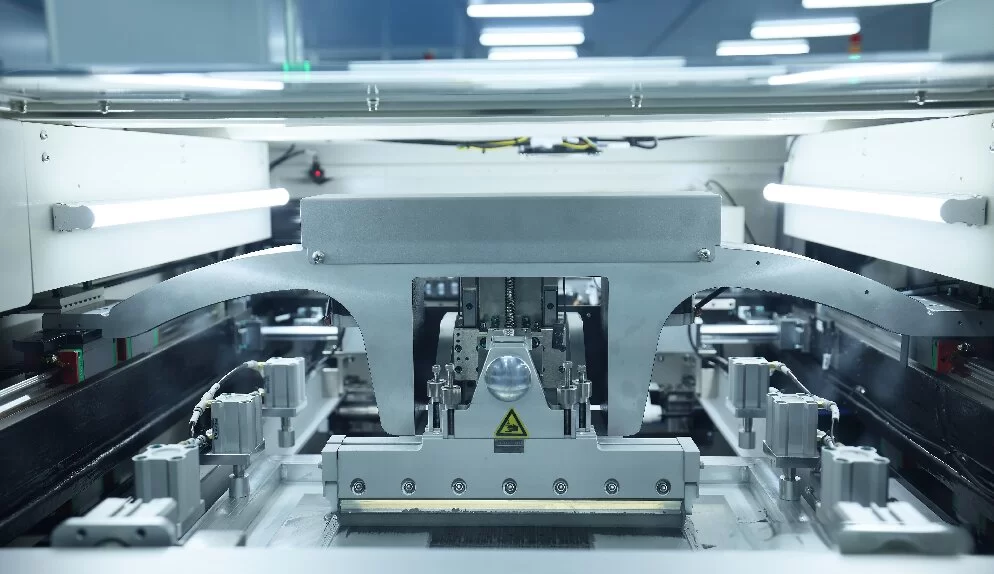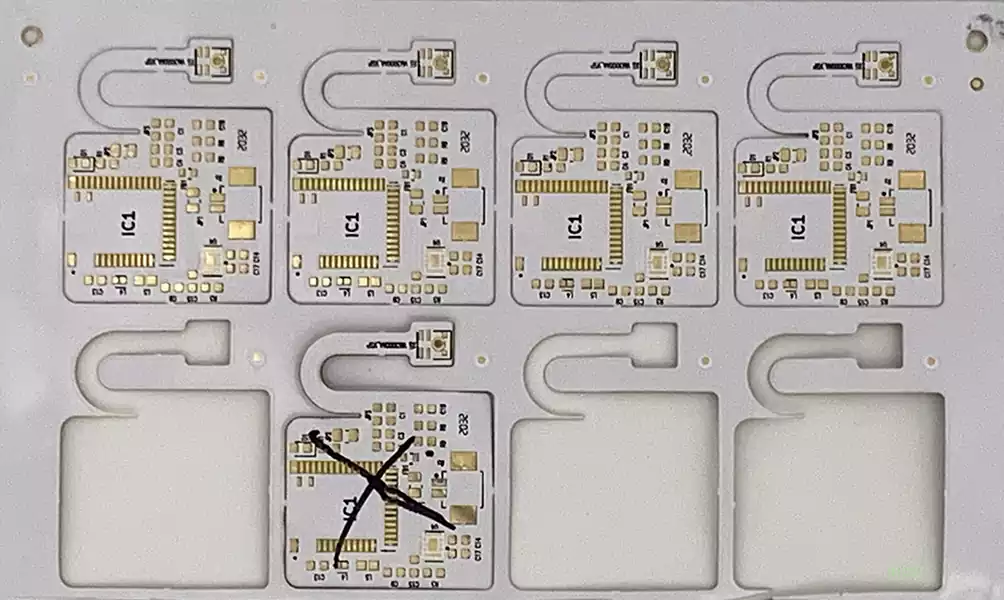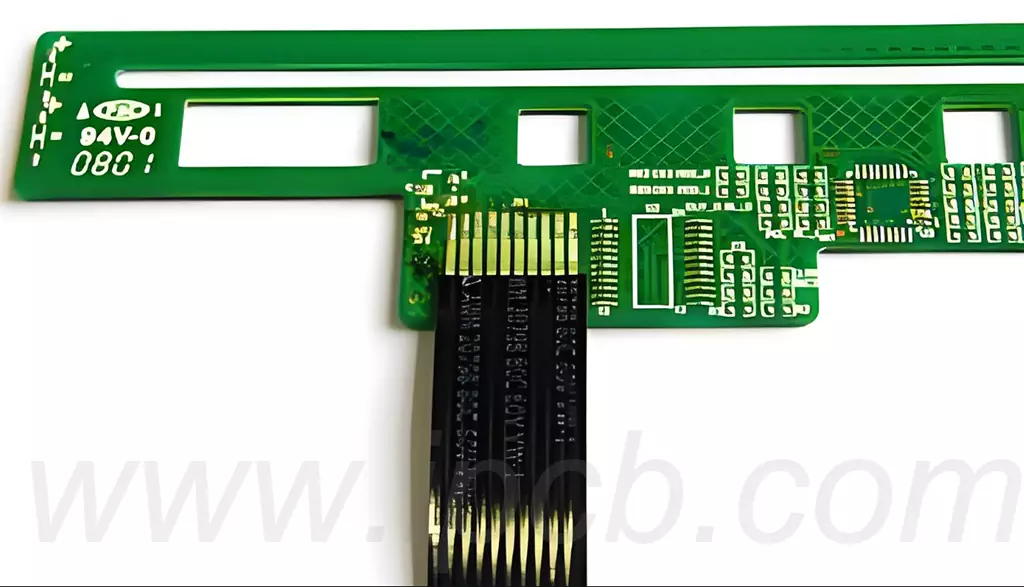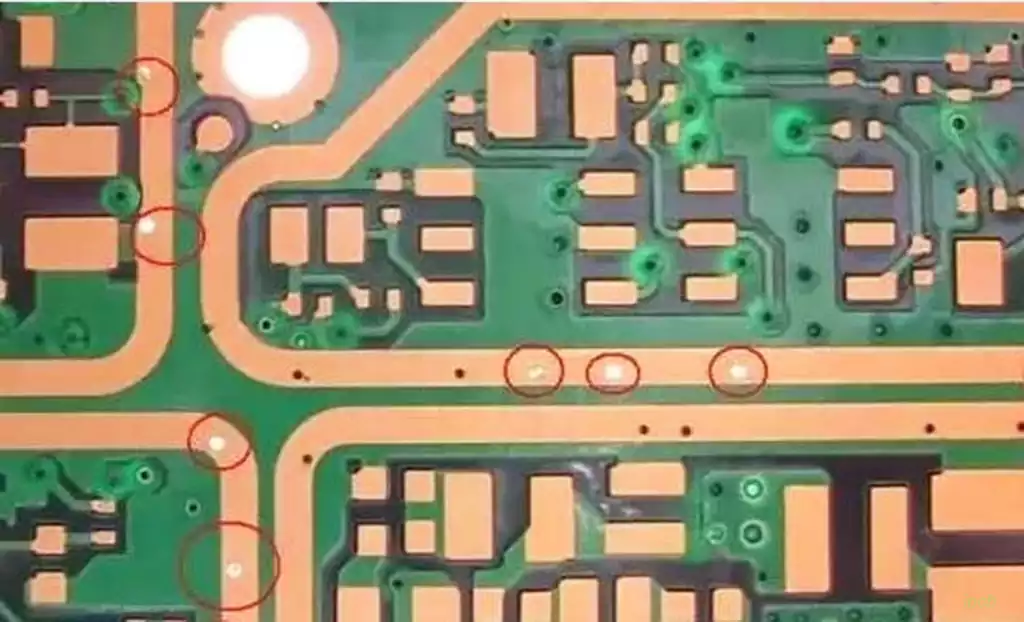In modern electronic design, fault protection mechanisms such as overcurrent, overtemperature, and short circuit are indispensable. Traditionally, people usually use fuses, PTC thermistors, or electronic circuit breakers to protect power supplies and loads. However, for precision electronic equipment, especially consumer electronics, communication equipment, industrial control modules, and even electric vehicle main control boards, traditional protection devices are often slightly larger in size, slower in response time, and have limited reliability.

Therefore, a new type of protection method, fusible semiconductor, has gradually been applied to extremely small and high-reliability circuit board designs. This device combines the fast response of semiconductors with the circuit-breaking characteristics of fuses. It can quickly disconnect the current when the circuit is abnormal and deterministically protect the circuit, thereby significantly improving the safety and stability of the system.
This article will comprehensively analyze six aspects, including definition principles, mainstream types, design integration processes, performance index comparisons, application scenarios, industry challenges, and future trends. The content is in-depth and well-organized, suitable for different readers such as technicians, foreign trade purchases, and industry newcomers to understand the technology, and provide specific directions for product selection and engineering applications.
What is “fusible semiconductor” and its technical principle
Definition and basic characteristics
Fusible semiconductor is a semiconductor protection device with internal controllable melting characteristics. It looks similar to conventional semiconductors on the surface; but it contains a micro-fuse structure or is designed with a controllable melting path. When the current exceeds the set threshold, the fusion structure will melt instantly, thereby cutting off the circuit and protecting the subsequent equipment from damage. Compared with conventional fuses, it has:
Fast action characteristics (usually complete fusion and cutting in milliseconds)
Precise current interruption capability (specific trigger current can be set)
Miniaturized packaging (suitable for high-density circuit board design)
Automatic replaceability (some devices support manual or thermal reset)
Therefore, it combines protection, precision and space saving, and is an ideal power and signal protection option in miniaturized design.
Mainstream structure and classification
The related devices on the market can be mainly divided into the following categories:
Semiconductor internal fusion device (integrated fusible link): For example, some chips integrate fuse structure, which is used for internal power supply and I/O protection;
Separately packaged fusible semiconductor: The surface looks like an ordinary resistor package, but it has a fusion structure inside, which is often used for short-circuit protection on PCB;
Reset type fuse semiconductor: After overcurrent disconnection, it has thermal reset capability or external reset capability, which is suitable for automatic recovery design;
Active protection module: integrates fentistor, MOSFET and fusion structure to form an intelligent protection device.
Working mechanism and action flow
When it works normally, if the input voltage or current is within the safe range, the device behaves as a low resistance path; once the current exceeds the set value, the heat inside it accumulates rapidly, causing the fusion structure to fuse, and the resistance instantly rises to an open circuit state. This process is usually divided into three stages: detection, triggering, and disconnection, with fast response and reliable action.
The reset method depends on the specific device. Some are single disconnection and need to be replaced manually; some are hot reset or automatic reset, which is suitable for no-on-site maintenance scenarios.
Mainstream device types and design integration solutions
Main device types of fusible semiconductors
With the increase in demand for overcurrent protection, fusible semiconductor devices have gradually evolved from a single type to multiple branches, suitable for different application scenarios. The following are common types:
One-time Fuse Type
This type of device has a simple design. Once the fuse structure is broken, it cannot be restored and the device must be replaced. Its advantages are stable structure, low price, and fast action. It is suitable for non-recoverable systems, such as battery protection circuits, disposable driver boards, power banks, etc.
Self-Resetting Type
This type of device uses reversible materials inside. When the current is abnormal, it will heat up and break the circuit, and then cool down to automatically restore the circuit. Although the reaction speed is slightly slow, it is easy to automatically maintain and is widely used in portable electronic devices, automotive electronics and other scenarios that are not suitable for frequent device replacement.
Active Controlled Fuse
This type of device adds detection and control modules to the traditional fuse structure. For example, a built-in microcontroller (MCU) or analog detection chip can accurately monitor the current state and realize the fuse action by controlling the transistor or switch element.
It is suitable for products with extremely high protection response accuracy requirements such as precision instruments, electric vehicle controllers, and servo motor drive boards.
Integration with PCB design
When embedding fusible semiconductor into circuit design, it is necessary to comprehensively consider multiple dimensions such as device parameters, wiring, and electrical and thermal effects:
Package matching
Currently, mainstream devices mostly use chip packaging (such as 0603, 1206, SOD-323, etc.), which is easy to SMT mount. When designing, it is necessary to match the copper foil thickness and pad size according to the device current capacity to avoid false actions or solder joint damage due to insufficient heat dissipation.
Series routing and thermal design
Fuse-type devices need to be connected in series in the power supply or signal path to be protected. Its biggest feature is that it relies on “heating” to achieve the purpose of protection, so the thermal effect cannot be ignored.
In PCB design, the following points should be noted:
Keep sufficient heat dissipation path, it is recommended to place copper foil or grounding copper around the device;
Avoid placing the device in areas susceptible to thermal interference (such as near ADC, MCU, Bluetooth module);
For high-power occasions, a package version with a heat dissipation copper ring can be used to enhance thermal stability.
Safety tolerance and system coordination
In engineering design, to avoid false operation, the fuse current value is usually set to 1.3-1.5 times the normal operating current. At the same time, it should be ensured that the downstream circuit withstands the instantaneous energy impact during the fuse process to prevent false touch or damage.
Some systems also need to cooperate with current sensing chips, digital control units, etc. to achieve intelligent circuit breaking and remote status feedback to further enhance the intelligence of system protection.
Combination with other protection devices
Fusible semiconductor is not a “master key”, it is more suitable as the first or last line of defense. Common combinations include:
Combined with TVS (diode), the TVS absorbs the peak voltage first, and then the fuse cuts off the current;
Combined with PTC thermistor to form a secondary protection system to improve the system’s impact resistance;
Combined with MOS tube, the fuse signal is used to control MOSFET to cut off the main current and realize the soft circuit breaker function.
Through multi-level protection design, the reliability of complex systems under various abnormal conditions such as overload, short circuit, surge, etc. can be significantly improved.
Typical application scenarios and industry trends
Wide application in the field of consumer electronics
In highly integrated consumer electronic products such as mobile phones, tablets, and wearable devices, space becomes the biggest limitation. Traditional glass fuses and PTC fuses are difficult to meet the needs of miniaturization, so fusible semiconductors are preferred in such products.
Taking a smartphone as an example, its motherboard integrates a large number of functional modules: main control SoC, charging management chip, RF module, audio chip, etc. Once a power supply is short-circuited, it may cause chip damage or even heat and fire. Therefore, major brands often introduce fusible semiconductors in key paths as ultra-small current circuit breaker protection devices, usually working in conjunction with PMIC (power management chip).
Typical features of such devices include:
Faster response time than traditional fuses;
Supports automated assembly of patch chips;
Can work reliably at extreme temperatures;
Package size as small as 0402, suitable for mobile phone-level high-density layout.
Safety assurance in automotive electronic systems
Modern automotive electronic systems are becoming increasingly complex, especially for new energy electric vehicles, whose battery management systems (BMS), motor drivers, fast charging modules, etc. are subject to complex conditions such as high current, high power, and transient impact.
In these modules, fusible semiconductors can be used for the following typical applications:
Protect BMS communication lines or measurement cables to prevent high voltage backflow;
Used in the power supply path of ADAS modules such as on-board cameras and radars to ensure the redundancy of the entire vehicle system;
Set up as a redundant current fuse in the fast charging circuit to form a double insurance design with the main circuit breaker;
Used as auxiliary protection for IGBT or GaN modules in motor control systems.
This type of application has high requirements for the accuracy, reaction time, and extreme environmental adaptability (-40℃ to +150℃) of fuse action, so most automobile manufacturers will choose high-reliability devices certified by AEC-Q200 or ISO26262.
Reliable protection in industrial automation equipment
In industrial scenarios, equipment downtime costs are high and maintenance is difficult, so the “reliability” requirements for circuit protection devices are particularly strict. The “single-point disconnection” function of fusible semiconductor can quickly cut off the power supply when a system failure occurs to avoid damage to the entire control board.
Common applications include:
PLC module power protection;
Sensor network node power protection;
Industrial Ethernet communication module;
Overload protection in the drive.
In addition, some smart factories have also introduced a “remote diagnosis + fuse” combination solution, which uses thermal sensing, remote MCU control and fusible link to achieve breakpoint visualization, greatly improving the safety management efficiency of the production line.
Medical equipment and special field applications
Medical electronic equipment emphasizes “stability” and “certainty”, especially in precision equipment such as in vitro diagnostics, portable monitors, and electroencephalogram collectors, which require a stable power supply environment.
The advantages of fusible semiconductors in such products include:
The package is micro and does not interfere with other analog circuits;
Fast response to avoid fault transmission to downstream circuits;
A variety of cut-off values are available for precise matching;
At the same time, since such equipment needs to meet certification specifications such as IEC 60601, many manufacturers will cooperate with branded devices to ensure that their fusing characteristics meet medical safety standards.
Challenges and development bottlenecks
Device reset is limited
Unlike PTC, most fusible semiconductors are non-recoverable designs, that is, they cannot be automatically restored after fusing and must be replaced. This will lead to increased maintenance costs in some applications (such as automotive and industrial). Therefore, how to develop integrated devices with “reset capability” has become the development direction for the next stage.
At present, some manufacturers adopt a “combination design”, that is, the fuse device and the reset circuit are integrated into a package, but the packaging complexity increases and the cost also increases accordingly.
Difficulty in performance evaluation in high-reliability situations
Since such devices are mainly used for “extreme events”, it is often difficult to simulate their actual fusing process and boundary conditions in actual systems. This brings difficulties to certification, testing and failure analysis.
To this end, the industry is promoting standardization work, such as developing dedicated test platforms and introducing electrothermal simulation systems to ensure that devices still have stable operating characteristics under high temperature, high pressure and high humidity environments.
Cost sensitivity restricts popularization
In the mid- and low-end markets, traditional fuses or PPTCs are still the mainstream choice, and the price is lower. Although fusible semiconductors have advantages in performance, they do not have price advantages in some high-voltage and high-power situations.
Therefore, manufacturers need to reduce costs through large-scale production, integrated process optimization and other means to promote their larger-scale implementation.
The standard system has not yet been fully established
Although some devices have passed UL, AEC-Q, IEC and other standard certifications, the overall fusible semiconductor market still lacks specially adapted product category standards. This has limited designers’ selection and use in new projects to a certain extent.
If customized standards such as “UL 248-14” and “IEC 60127-9” can be formed in the future, it will be conducive to promoting the maturity of the industrial ecosystem.
Summary and Outlook
Fusible semiconductor is an organic combination of traditional fuses and modern semiconductor technology, representing the development trend of the new generation of electronic systems in the field of “refinement, intelligence, and circuit protection”. With its advantages of small size, high response, and precise interruption, it gradually replaces traditional devices and plays an important role in multiple high-reliability scenarios such as consumer electronics, automotive electronics, industrial control, and medical equipment.
Although it still faces challenges such as insufficient reset capability, high testing difficulty, cost and imperfect standard system, with technological progress and industry promotion, the application boundaries of fusible semiconductor are constantly expanding.
For electronic system designers who pursue higher reliability and higher integration, this type of device is undoubtedly one of the key components of future protection system design.



